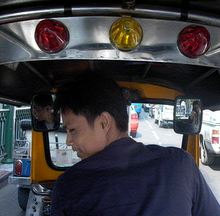Opinion, The Jakarta Post, 1 March 2008
Published as "University Competitiveness"*
Various newspapers and weblogs have, in the past few weeks, discussed about the controversial ranking of Indonesian universities by Globe Asia magazine (February 2008). The ranking is controversial because it places Universitas Pelita Harapan (UPH) directly under Universitas Indonesia and above other universities that have traditionally been regarded as the best in Indonesia. On one hand, Globe Asia should be applauded for its attempt to rank Indonesian universities for the first time, because it gives the public access to previously unavailable information. The report manages to put into question the assumption that public universities in Indonesia are generally better than private universities (Suara Pembaharuan, 29 January 2008). It also raises the question whether the role of capital has enabled the better funded private universities to actually outperform the more reputable public universities, or whether it is merely marketing buzz.
On the other hand, the strong opponent to the ranking deems it fallacious because Globe Asia magazine, like UPH, is owned by Lippo Group and it gives more scoring weight to university facilities over faculty members and research (Priyo Suprobo, Kompas, February 15, 2008). Globe Asia also gives no indications of data collection methods or sources of information. In other words, the credibility of the information published by Globe Asia is questionable.
Underlying this debate is the issue of information, specifically access to, credibility of, and ability to discern information. Information affects public perception in general. In this case, information influences how the public conceive a university standing in comparison with the others, and it affects prospective students and their parents in making decisions about choosing one university over the others.
With the commercialization and privatization of universities, some fear that the universities with more marketing budgets under their belts will be able to conduct campaigns that may very well enhance and even exaggerate their reputations. So how do we ascertain that this will not be the case?
The answer lies in the attempt of information sources to give more access and more credible information to the public, while individuals try to gain and demand more access to more credible information, and increase our ability to discern information.
Apart from words of mouths, currently the Indonesian public has little or difficult-to-get access to hard indicators that could help us in determining the credibility of information about a university. University accreditation is rather dubious because of the ability of a university to manipulate the data, while the ones published by universities are often done for the purpose of marketing their own programs.
Within this context, any attempts to rank universities against a similar set of criteria should be encouraged as it helps the public to gain a better sense of a university standing. Any attempts to rank universities, either nationally or globally, however, have been imbedded with criticisms, some draw more than the others. But regardless of their many controversies, university ranking systems enable the public to get better sense about university standing in relation to the others.
For example, six of Indonesian top universities rank in the range of three to four hundredths in Times Higher Education Survey (THES), and did not even make the list of top five hundred universities in Academic Ranking of World Universities (ARWU) – regarded by many as one of the most credible university rankings. This information not only confirms our understanding that Indonesian universities in general lag behind those in many other countries, but it gives hard indicators which areas we lag in.
Therefore, what we need is to have more versions of Indonesian university rankings and to provide/ gain more access to other substantial information and reviews of universities, with more credible methodology that would ensure more objective information. In addition, a third aspect needs to be emphasized, i.e. the ability to discern information.
To be able to discern information is to be able to determine the relevancy, credibility, neutrality, and validity of the information. To gather information, one must be willing to pay with energy, time, or information processing in the brain; because of this investment, one will only make the effort to gather information if the information is considered relevant and thus worthy of the cost (Pinker, How the Mind Works, 1997: 142, 175).
Some information also cost money to access, while others, like advertising, is ‘free’ for public. Information gathering, therefore, is an investment of energy, time, information processing, and, quite often, money.
Education is an investment of a lot of energy, time, information processing, and money. Unfortunately, many prospective students, as observed by Richard James, Professor of Higher Education at the University of Melbourne, and as I learned through my five years of teaching at university level in Indonesia, “do not have well-formed intentions and aspirations.”
In addition, education is one of the area that is prone to information asymmetry – a condition whereby an inequity of information exists in a transaction (Stiglitz, "Making Globalization Work", 2006: xiv), in this case, between the prospective students and their parents vis-a-vis the universities. Information about a university “... is impenetrable to all but the most informed and literate families and students ... making them [most students] – particularly those with less educational capital, at a loss” (James, 2002).
To help close the information gap, before we invest in our own/ our children’s education, we should invest our energy, time, brain tissue, and money in finding information about our/ our children’s intentions and aspirations, and about the universities. We should make ourselves better informed and more literate consumers of education.
Information, according to Steven Pinker, Professor of Psychology at Harvard, also feeds into our knowledge and intelligence; our beliefs and desires are none other than information (Pinker, 1997: 25). Without sifting good information from bad, one may very well trust fallacious source, form fallacious beliefs and desires, and make fallacious investments.
Notes:
* This is the original, unedited version.








